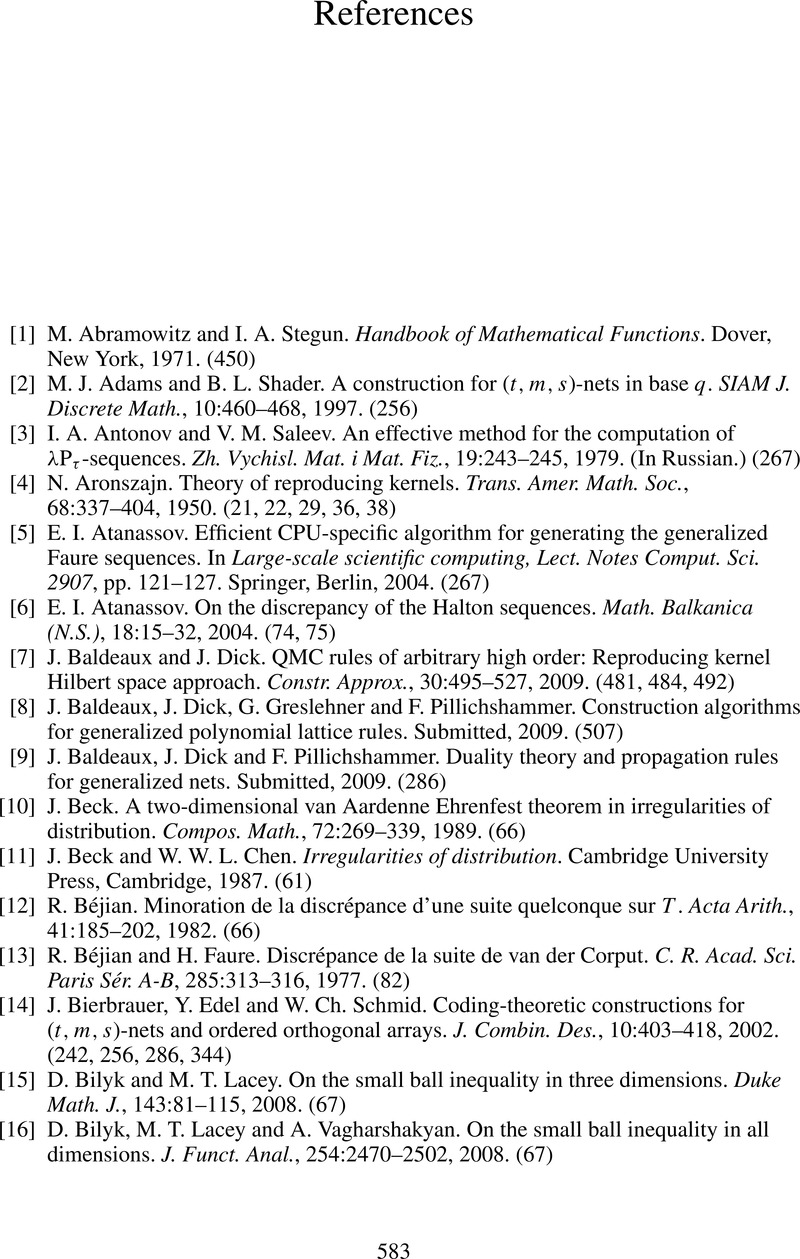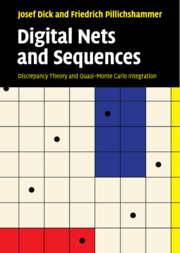Book contents
- Frontmatter
- Dedication
- Contents
- Preface
- Notation
- 1 Introduction
- 2 Quasi–Monte Carlo integration, discrepancy and reproducing kernel Hilbert spaces
- 3 Geometric discrepancy
- 4 Nets and sequences
- 5 Discrepancy estimates and average type results
- 6 Connections to other discrete objects
- 7 Duality theory
- 8 Special constructions of digital nets and sequences
- 9 Propagation rules for digital nets
- 10 Polynomial lattice point sets
- 11 Cyclic digital nets and hyperplane nets
- 12 Multivariate integration in weighted Sobolev spaces
- 13 Randomisation of digital nets
- 14 The decay of the Walsh coefficients of smooth functions
- 15 Arbitrarily high order of convergence of the worst-case error
- 16 Explicit constructions of point sets with the best possible order of L2-discrepancy
- Appendix A Walsh functions
- Appendix B Algebraic function fields
- References
- Index
- References
References
Published online by Cambridge University Press: 05 July 2014
- Frontmatter
- Dedication
- Contents
- Preface
- Notation
- 1 Introduction
- 2 Quasi–Monte Carlo integration, discrepancy and reproducing kernel Hilbert spaces
- 3 Geometric discrepancy
- 4 Nets and sequences
- 5 Discrepancy estimates and average type results
- 6 Connections to other discrete objects
- 7 Duality theory
- 8 Special constructions of digital nets and sequences
- 9 Propagation rules for digital nets
- 10 Polynomial lattice point sets
- 11 Cyclic digital nets and hyperplane nets
- 12 Multivariate integration in weighted Sobolev spaces
- 13 Randomisation of digital nets
- 14 The decay of the Walsh coefficients of smooth functions
- 15 Arbitrarily high order of convergence of the worst-case error
- 16 Explicit constructions of point sets with the best possible order of L2-discrepancy
- Appendix A Walsh functions
- Appendix B Algebraic function fields
- References
- Index
- References
Summary

- Type
- Chapter
- Information
- Digital Nets and SequencesDiscrepancy Theory and Quasi–Monte Carlo Integration, pp. 583 - 596Publisher: Cambridge University PressPrint publication year: 2010



